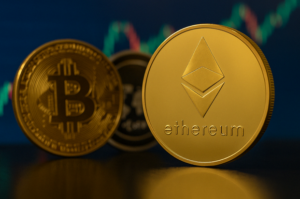RLUSD Coming: Ripple’s USD Stablecoin to Hit Ethereum, XRPL

Ripple said that its upcoming stablecoin will be called Ripple USD (RLUSD). The firm expects to debut it on the Ethereum network and the XRP Ledger (XRPL) this year. The stablecoin has an alternative name, “Real USD,” called by Ripple CEO Brad Garlinghouse.
Ripple CEO Brad Garlington called the stablecoin “Real USD.”
“The name of the Ripple stablecoin [is] RLUSD; I like to call it Real USD or Ripple USD,” Garlinghouse said during a panel discussion at XRP Ledger Apex in Amsterdam.
Here Comes The Noise
The latest revelation comes after Ripple finalized its deal to acquire Standard Custody on Tuesday. With this acquisition, the company aims to facilitate its stablecoin issuance and tokenization of real-world assets.
This is Ripple’s second major acquisition in the last year, following its $250 million acquisition of Metacon in May 2023. Metacon is the top provider of institutional digital asset custody solutions.
The move also expands Ripple’s regulatory licenses, adding a New York-regulated trust company to their portfolio, which already includes various money transmitter licenses, a Singapore license, and a registration from Ireland.
These valuable licenses can boost Ripple’s blockchain-powered enterprise solutions and services for institutional customers. In addition, Ripple has appointed Jack McDonald, CEO of Standard Custody, as Senior Vice President of the company’s stablecoin segment.
Throughout his career, McDonald has worked with investment banks, asset managers, financial services, and, more recently, fintech and digital assets. His extensive knowledge and expertise will be instrumental in leading the stablecoin team and bringing Ripple’s stablecoin to market.
XRP Is Going Strong
Ripple also announced its adoption of Axelar, a bridge solution. The firm plans to use Axelar to facilitate connections between the XRP Ledger and compatible sidechains built on the Ethereum Virtual Machine (EVM) standard.
“Axelar is a battle-tested, production-ready bridge to bring XRP as a native currency to the XRPL EVM Sidechain,” Ripple said in a statement.
As reported, Axelar streamlines the user experience by allowing seamless swapping of XRP for wrapped XRP (eXRP), which serves as the native token for gas fees on the sidechain. Developed by Ripple and its partner Peersyst Technology, the sidechain leverages evmOS, a modular and customizable technology from Evmos.
Explaining its choice, Ripple cited Axelar’s proven track record and integration with major projects like Uniswap and Microsoft. Previously, the company planned to adopt the XLS-38 cross-chain bridge but abandoned this solution due to concerns about its user-friendliness.
Legal Challenge?
Ripple announced in April its plan to launch a U.S. dollar-backed stablecoin. This is its first foray into the stablecoin sector, and Ripple will face competition from established players like Tether (USDT) and Circle (USDC).
While Ripple’s stablecoin has yet to launch, it has already been hit by the U.S. Securities and Exchange Commission. In a reply brief filed in May, the Commission suggested that Ripple’s upcoming stablecoin is an unregistered security.
The SEC’s statement follows an ongoing lawsuit against Ripple for allegedly selling XRP as unregistered securities. The agency also dismissed Ripple’s standpoint that its XRP sales were legal due to international licenses.
The SEC’s scrutiny and the ongoing tension between the agency and Ripple might hinder its stablecoin ambitions. The SEC’s view on stablecoins is currently unclear. However, in the past, the SEC took legal action against the stablecoin Binance USD (BUSD).
Following a federal court verdict in July 2023, which ruled that Ripple’s native token, XRP, was not a security, the SEC filed an appeal to dismiss the court ruling. The SEC also asked Ripple to pay $2 billion to settle the case.
The lengthy legal lawsuit has entered its final stage. If approved by the court, the $2 billion fine would be the second-largest after the $4.3 billion Binance agreed to pay in November 2023 to end the U.S. Department of Justice investigation.














